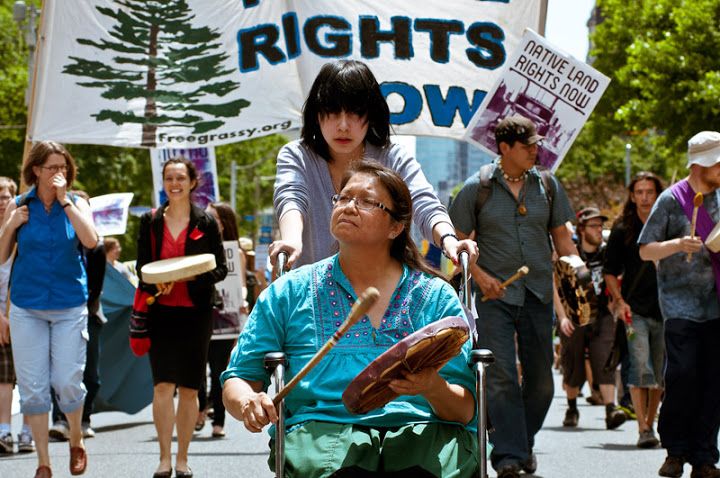
Judy Da Silva is the environmental health coordinator for the Grassy Narrows First Nation, also known as the Asabiinyashkosiwagong Nitam-Anishinaabeg, in northern Ontario. Judy Da Silva is 54 years old, a mother, grandmother, and activist. Her story is the story of contemporary Grassy Narrows, a tale of industrial violence followed by State brutality with a stream throughout of community activism, organizing and hope.
In 1962, the year Rachel Carson’s Silent Spring was published, Reed Paper, in Dryden, Ontario, began dumping untreated mercury waste into the Wabigoon River. By 1970, the mill had dumped more than 9,000 kilograms, or close to 10 tons (US), of untreated mercury into the waters. Just downstream lay Grassy Narrows, an Ojibwa community that had been on the Wabigoon and English Rivers for centuries. For centuries, they had relied on fishing as a food source and a cultural and economic base. For centuries, the people of Grassy Narrows had prospered. Then the mercury came, the fish turned to poison, and the mercury levels of the Grassy Narrows First Nation population hit astronomical heights. Members of the community recognized early on that they were suffering new and catastrophic symptoms.
Judy Da Silva is 54 years old, and so she was born in that fateful year, 1962. In an interview this week, Judy Da Silva noted: “I have mercury poisoning. It affects me physically. I’m like the age of the mercury poisoning. I was in my mother’s womb when the poison was being poured into the river … It’s like a slow degenerative form of dying … My mom is still alive and she says they roamed the land freely. They fished, they hunted, they lived off the land. They hardly went to the store. They were very independent economically and socially. Now, it’s like our hands have been severed.”
Since the 1970s, a team of Japanese scientists has been studying and documenting the mercury poisoning in Grassy Narrows. Others have as well. The contamination is considered “a prominent example” by scholars, activists, and just plain folk. And since the 1970s, the Canadian government and the provincial government of Ontario have done absolutely nothing to clean up the river. This week a new report said that the river can be and should be cleaned up. Ontario has a new regime, which seems to be more committed to the rights of indigenous populations, and to the need to address the centuries long violence committed against indigenous people. Will the new provincial government clean up the river?
Thursday, over a thousand people, led by Grassy Narrows teenagers, marched through Toronto, demanding justice. Judy Da Silva was among them, having returned from Geneva where she made a case before the United Nations, arguing Canada had violated the Grassy Narrows First Nation’s right to access to clean water. Back in Toronto, Da Silva is of two minds. On one hand, “We are not valuable enough to be considered. We, as Indigenous people, are expendable. And that’s why the poison is allowed to be still in the river. Money is more important than us.” On the other hand, “I always gotta be hopeful. I can’t be a victim. I gotta be a powerful person.”
In the end, “the bottom line is the river has to be cleaned up.” Judy Da Silva joined the women, elders, teenagers, and everyone in the Grassy Narrows First Nation to say: “No more fancy words, no more studies”. They say NO to the murderous racist devaluation of their lives. They say the time is NOW.
(Photo Credit: Legal Defense Fund for Judy Da Silva)